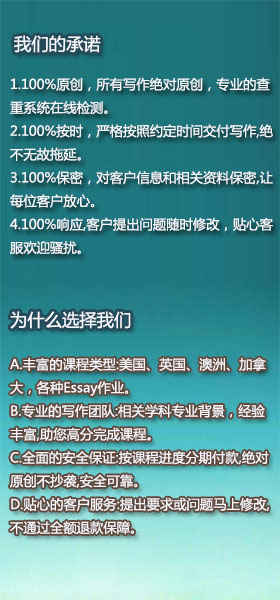INTRODUCTION TO THE MODULE
This module will provide students with a thorough grounding in the theory and practice of international trade in
the context of economic, social and cultural globalisation, as witnessed since 1945. Through this module,
students will explore the international business environment, including issues in international economics and
international management. An understanding of the challenges and opportunities created by globalisation for
firms, states, markets and individuals is a critical aspect of international management education.
OVERVIEW OF THE MODULE / MODULE AIMS
Globalisation has been intensifying, widening and deepening since 1945. This trend looks set to continue. The
global integration of markets has created many economic, cultural and social opportunities, but it has also
created challenges for states, firms and individuals. This module will allow students to develop and deepen
their understanding these opportunities and challenges.
第一个原因Reason two – retail banks’ major revenue sources have already been infiltrated one by one. 对于这一点,我们可以写三个分论点,分别从贷款,存款,和转账这三个商业银行最传统的业务模块来分析它们是怎样被 FinTech start-ups :
Up until now, money lending is one of the primary reasons banks exist, however, peer-to-peer (P2P) lending companies have rapidly marched into the backyard of traditional financial institutions, replacing their role as the financial intermediary. According to Wolfe’s and Yoo’s (2017) research, around 27% of personal loan volume in the US has been taken by P2P platforms.
Hauswald and Marquez (2006) also suggest because of non-bank lenders, mostly FinTech start-ups, are closer to potential customers’ credit information; therefore they can approach more good-quality borrowers and squeeze retail banks out of the market. In addition, in many countries, especially developing countries, it is extremely difficult for ordinary people and SME to be financed by high street retail banks without collaterals.
By pinpointing these customers, marketplace lending has been developing exponentially and the trend will be unstoppable. Based on the Citi’s (2016) study, China has the largest P2P market in the world and their cumulative lending volumes account for 3% of retail loans and Citi (2016) estimates this figure will be raised to 9% at the end of 2018.
Apart from making potential customers are easily accessible, P2P lending has another silver bullet up their sleeve against incumbent banks. These online platforms can match lenders and borrowers through the digital algorithm, meaning they can offer cheaper loans for borrowers and increase investment returns for lenders at the same time.





